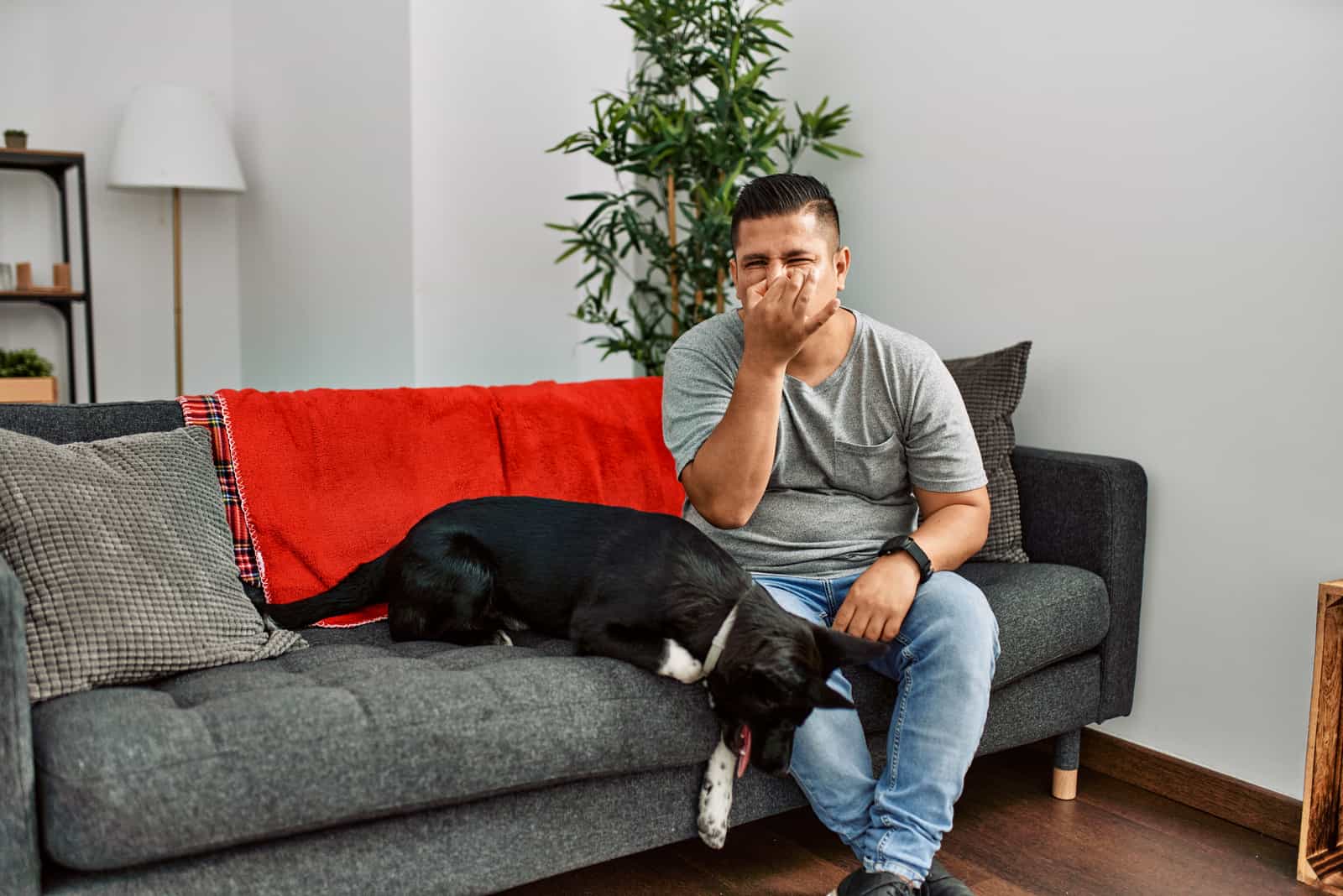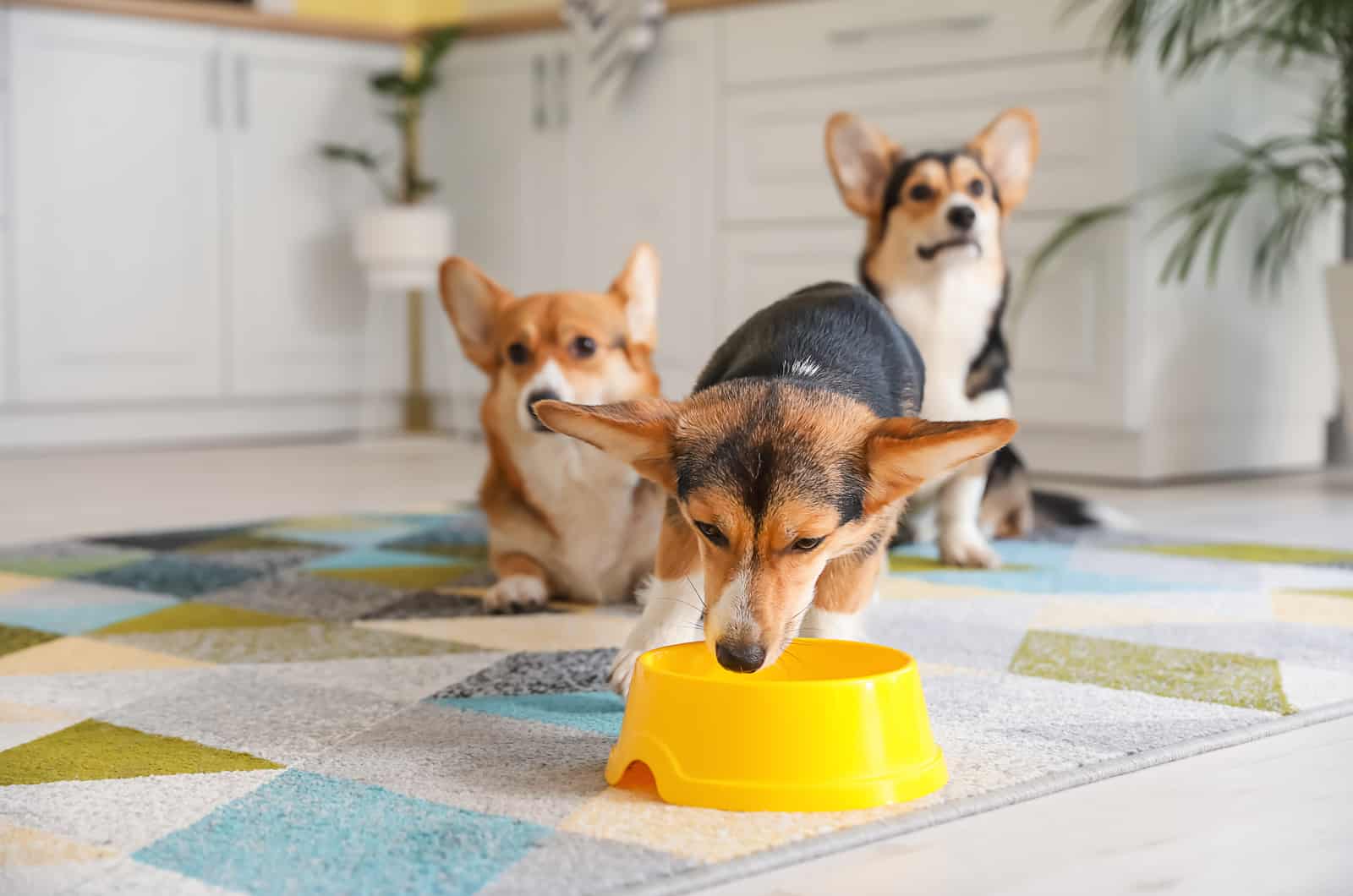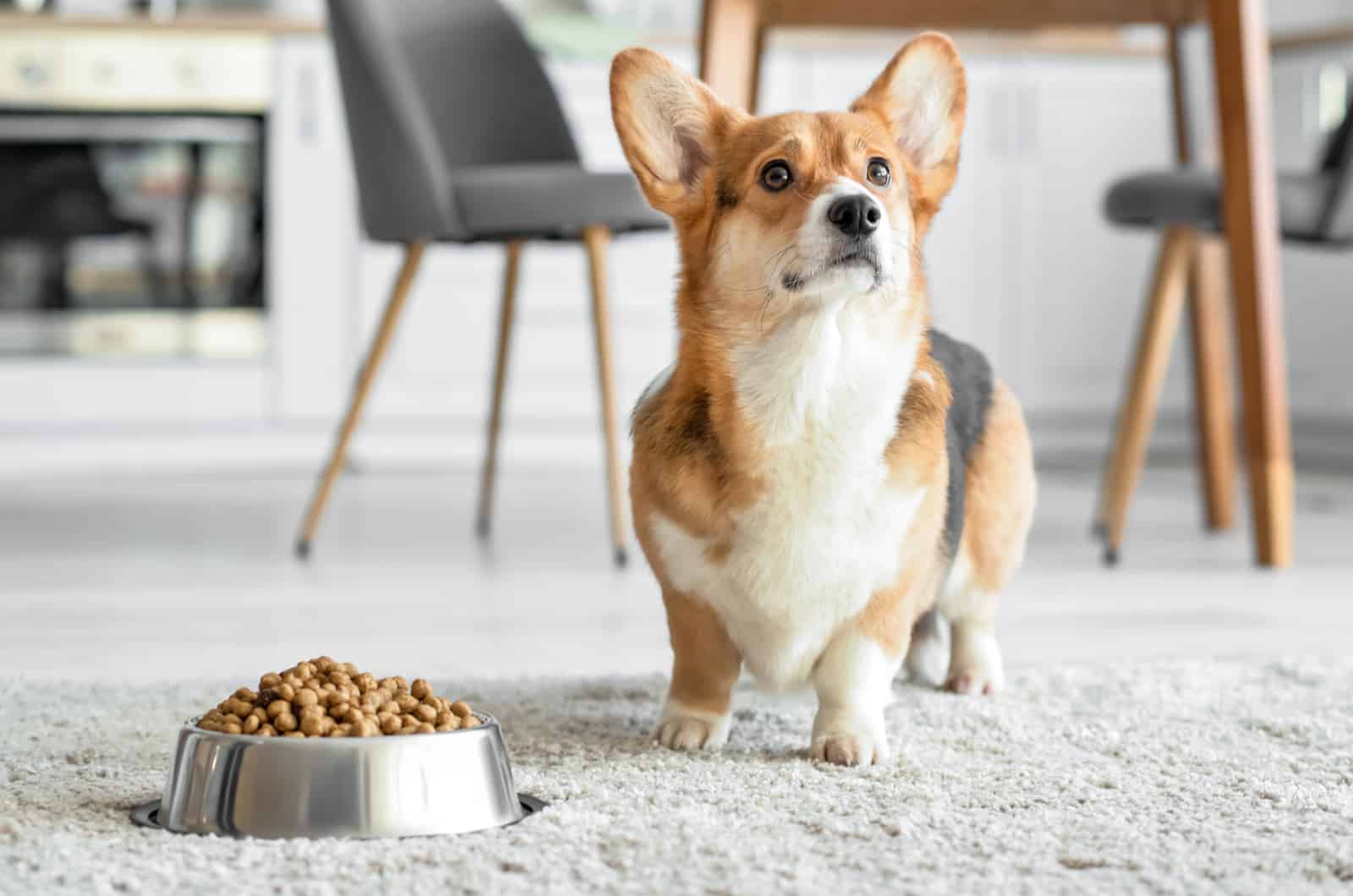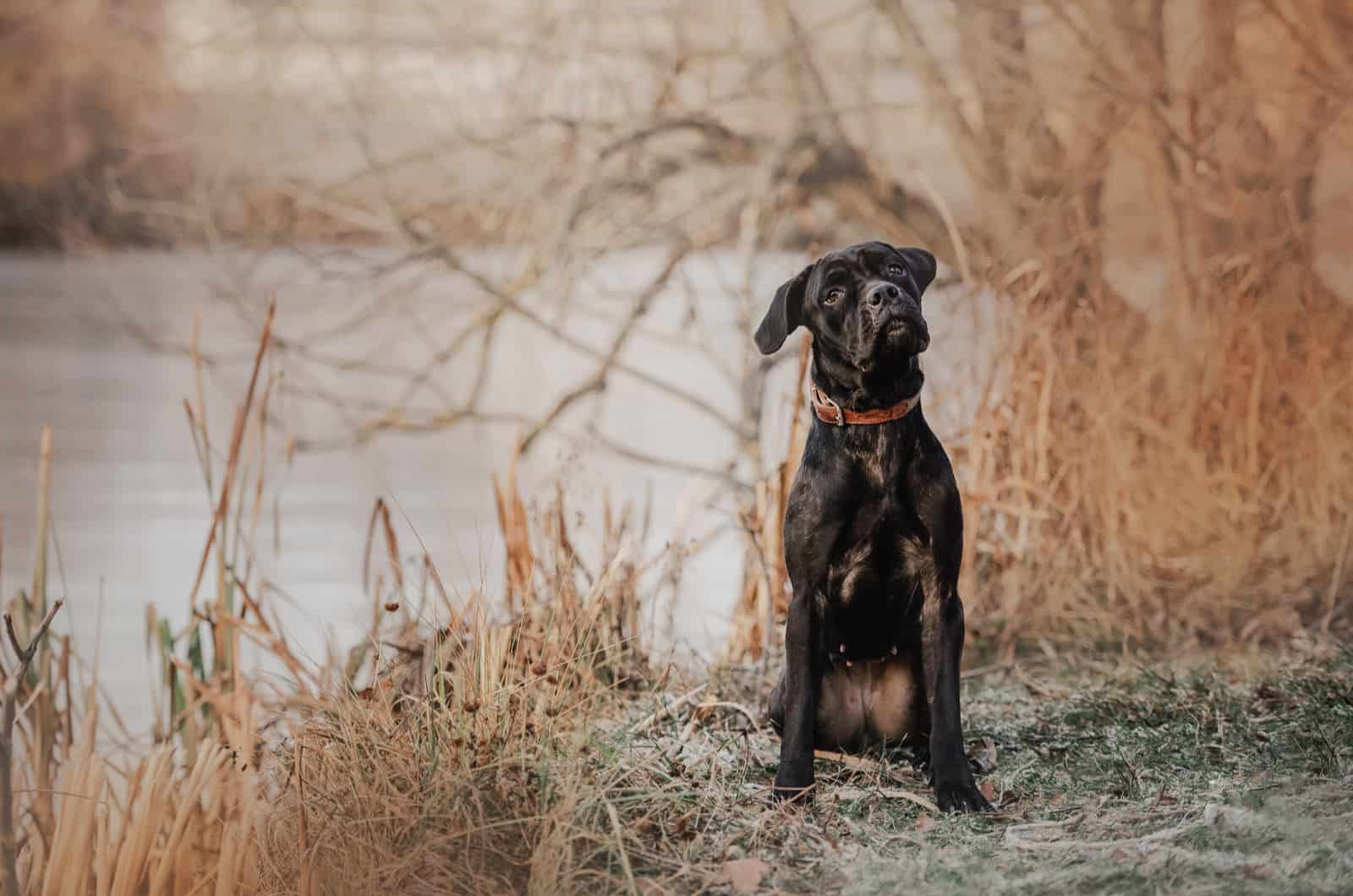Dog farting is very common. While many paw owners are aware that it’s only natural, some happen to be very concerned when their dog lets a fart out.
It’s late at night and you are sitting in front of the TV enjoying your evening in peace. All of a sudden, you are startled by an unbearable stench that quickly fills the entire room. You turn to your dog and realize that it has already run away from the soul-wrenching smell. You just experienced an epiphany that your lovely dog ripped a potent fart.
How did this happen? What caused my dog to fart? Why does my dog fart so much? What can I do to stop dog farts?
I have had many worried owners come to me and ask, “Why does my dog fart so much?”. And, I would usually reply with, “How much do you think is too much?”.
This is because many dog owners become concerned after the first time they realize their dog has farted, not knowing that, in fact, dogs fart quite often.
To shed light on the common “problem”, I decided to do some research on excessive dog farting so you don’t have to. I mean, you surely don’t want people seeing your search history on “Why does my dog fart so much?”.
In this article, we’re going to break down the dog farting components – literally. To fully understand what’s going on behind your dog’s farting, we will talk about the dog fart itself, what causes it, and how it’s passed through the digestive system.
We will also mention foods and health problems that cause excessive farting in dogs, and how you should manage a pooch with digestive issues.
So, hold your breath because we are going on a smelly adventure!
Why Do Dogs Fart?

Well, dogs fart simply because there is accumulated gas in their digestive tract. Each day, a normal amount of gas is developed after food intake and its digestion.
Unlike cats, dogs don’t have feeding intelligence. This doesn’t mean that they are dumb. This means that a dog eats fast and a lot, if provided with big portions.
A dog will most likely gobble up everything in front of it without knowing when to stop.
This behavior leads to more air intake, so its digestive tract becomes full of gas. Of course, some dogs are shy eaters, so this doesn’t necessarily apply to them.
Farting is a completely natural body function in both humans and dogs. Other animals also fart.
The thing is, you may just not be aware of it because different species have different farts – quiet, loud, smelly, or neutral. We dare to say that each fart is unique.
Even though farting is a natural process, there are some cases when farting becomes a symptom of an underlying health condition. But, we will get to that later.
Now, let’s talk about how dog farts are produced. By understanding the physiology of the dog’s digestive system, it will be easier for you to figure out how to prevent excessive gas in dogs.
The Science Behind Dog Farting

Of course, there is almost nothing that science can’t explain!
A fancy way to describe gas in dogs is “dog flatulence”. This term is actually an official medical way to say “dog fart”. So, whether you’re going to use one word or another, dog farting is still a thing, and it always will be.
Dog farts (or dog gas) is nothing more than excess air within intestines that the body has to release on a daily basis. Passing gas is also done by burping. You may notice that your dog burps from time to time.
But, sometimes burping is not enough to release a lot of air that has accumulated in the stomach. So, the gas passes to the anus.
Let’s see how it works.
A Dog’s Digestive System
A lot of research has been put into studying the dog’s digestive system. It’s a very unique, self-maintaining machine that works in complex ways.
A dog’s digestive system is almost the same as a human’s, so it is relatively easy to name its parts.
It starts with the mouth in which the tongue, the teeth, and the salivary glands are located. Each of these has a role in initially breaking down food.
The esophagus is a muscular tube that leads chewed food down to the stomach. The stomach is often called the “gaster” (hence, the word “gastrointestinal”).
Inside the stomach, chemical components called enzymes do their job of breaking down fats, proteins, and carbohydrates from swallowed food. Alongside enzymes, probiotics are key components in food digestion.
Probiotics are “good bacteria”, and they help maintain a healthy gut. But, most probiotics are eliminated by the stomach’s high acidity. Therefore, these good microorganisms barely reach the intestines.
Small and large intestines are connected to the stomach. The biggest part of food digestion is completed in the small intestine. The small intestine is also the longest part of the dog’s digestive system. Also, all nutritive food components are absorbed in the small intestine.
Once the food is broken down into minimal particles, it is transferred to the large intestine. The formation of poop takes place in the large intestine.
Poop, or better to say “feces” is formed when all water is removed from the solid waste particles. At last, feces is stored within the large intestine and is passed down to the rectum.
Bacteria Involved In Gas Production
Okay, but what about gas? So, remember when we mentioned bacteria in the dog’s digestive system? Well, they are not only present in the stomach.
Bacteria are spread through the whole gastrointestinal tract. Their roles are very important for normal function of the dog’s body. There are good and bad gut bacteria – both help in the food digestion process.
These microorganisms do their best to help your dog form gas in order to get rid of toxic waste. We will call them the fart-producing bacteria.
The fart-producing bacteria ferment food components that are difficult to digest, such as complex carbohydrates and fibers.
Dog Fart Composition
So, the bacteria literally “feeds” off of carbohydrates and produce gasses such as nitrogen, hydrogen, carbon dioxide, and methane. These compounds are actually odorless. In fact, 99% of a dog’s fart is composed of these odorless gasses.
What makes the gas smelly is hydrogen sulfide. Or, to simply put it – sulfur – the main culprit of bad gas.
The pungent smell of a dog fart is due to higher concentrations of sulfur after eating foods like nuts, soybeans, spicy food, processed foods, and dairy products. And, we all know dogs shouldn’t eat any of these.
So, what foods should dogs avoid eating? Does my dog fart so much only because of the food? Should I schedule a vet appointment? Will my dog stop farting if I change its diet?
Let’s find out.
What Makes Your Dog Gassy

Dogs are omnivorous, which means their bodies digest both plants and meats. Despite being able to process different foods, canines have a sensitive stomach.
Food is to blame for your dog’s frequent farting, to say the least. Whatever comes in must come out. So, besides poop, passing gas is a part of eliminating food waste from the dog’s body.
Although some foods are more difficult to digest than others, factors like food temperature and freshness can cause smelly gas in dogs.
Alongside food, there are some important health problems that cause your dog to fart.
What makes gastrointestinal issues different from just gas-inducing foods are frequent and painful stomach murmurs followed by extremely smelly farts and changes in stool color and consistency.
First, we will describe how food affects a dog’s sensitive stomach and what foods you should avoid giving to your furry friend.
Food Intolerance
Food intolerance is quite popular among we humans, but it is also a thing in the canine world.
You know how certain foods make you feel funky, bloated, and just kind of “heavy”? That is probably because you have food intolerance.
Well, so do our dogs. Unfortunately, dogs can’t speak, and they can’t tell us what’s going on, so instead – they fart. Or, just end up with diarrhea.
Food intolerance is when a dog’s sensitive stomach has difficulties digesting certain food components. Signs of food intolerance in dogs usually appear right after eating a meal.
They might want to go as soon as they eat, or they will have frequent farting sessions later that day.
Common cause of food intolerance in both humans and dogs is lactose, found in dairy products. Research shows that most carnivores aren’t capable of successfully digesting lactose.
Puppies are lactose intolerant, but adult dogs can ingest small amounts of dairy products occasionally.
Food Allergies
In contrast to food intolerance, food allergies take some time to develop.
Food allergies are reactions of the dog’s immune system to certain additives and components that are found in food.
Dogs that are allergic to some food ingredients won’t show the reaction at initial exposure. Usually, it takes a second time ingesting an allergen before symptoms start to show.
Signs that your dog is allergic to some food include passing gas, sneezing, itching, hot spots and skin rashes, pigmented skin, vomiting, diarrhea, and runny eyes.
Whether food allergies are more common than food intolerance in dogs is yet to be researched.
Reaction To Medication
Gastrointestinal issues can be linked to oral drug administration in dogs. This doesn’t necessarily mean overdosing on dog pills.
What it does mean is that new drugs might cause disturbances in the dog’s digestive system, resulting in vomiting and diarrhea. These signs appear after the dog has taken the medication.
This usually happens when administering antibiotics because antibiotics destroy both bad and good bacteria. Overuse of supplements and vitamins can also lead to gastrointestinal issues.
Human Food
This is where it gets interesting.
Every paw parent knows the struggle of resisting those puppy eyes near the kitchen table. Usually, at this point, mistakes are made.
Unable to say “NO” to their lovely pooches, owners decide to give them “just a bite” of the food laying around on the table. Now, this shouldn’t be an issue if the food is really dog-friendly, right?
Well, the reality is that most foods that we eat are well seasoned. This means we eat sweet, salty, sour, and spicy foods that aren’t really good choices for a dog’s sensitive stomach.
Vegetables that are safe for dogs but cause bad gas include cabbage, brussels sprouts, and broccoli.
Most ingredients found in human foods are very difficult for dogs to digest. In fact, some foods are even heavy on our stomachs!
Table scraps
It’s a pity to throw out those leftovers from today’s lunch. Why not give them to the dog?
Honestly, this is such a bad idea and you shouldn’t incorporate this as a regular, everyday thing.
Sure, it’s okay to give your dog just a tiny bit of what you’ve been eating. A very small amount won’t do any harm, plus the dog will probably enjoy it a lot.
But, giving your dog lunch leftovers in large amounts can be very dangerous and devastating to its digestive system and overall health.
The food that we eat is full of components that dogs can’t digest, leading to bloat and excessive farting after eating a whole meal of table scraps.
In this case, smelly dog farts are the least of your problems. If you frequently feed your dog table scraps, it can develop health issues, such as obesity and inflammation of the pancreas.
Dog Food
Choosing the right dog food is very important when you are dedicated to owning a dog.
Dog food is specifically made for dogs, right? But, not all dog food is high in quality. There are many dog food companies that produce good dog food, but there are also those that produce low-quality kibble that is of little to no nutritional value.
Low-quality dog food
Low-quality dog food is definitely something you will want to avoid.
Not only can low-quality dog food cause passing gas and diarrhea, but it can also lead to malnutrition and problems in growth – especially in puppies.
When choosing food for your furry friend, make sure to avoid cheap brands that use food fillers, meat by-products, and plant-based proteins. Dogs eat meat, and no meal should be prepared without this important component.
Opt for high-quality dog food that is full of healthy food components such as vitamins, animal protein (fish, chicken, veal), carbohydrates, minerals, and fats.
Adding new food to your dog’s diet
Adding new food to your dog’s diet is common. It is also common for your dog to fart a lot after eating new food.
Due to the fact that a dog’s stomach is really sensitive, diet changes are quite harsh. But, don’t worry – dogs quickly get used to new foods as long as the food consists of dog-friendly components.
Some owners keep wet dog food in the fridge and serve it cold to their dog. Cold food is a common cause of diarrhea in dogs.
If new foods that have been recently introduced into your dog’s diet are causing it to fart excessively, it’s probably time to go back to the old diet.
Is Dog Farting A Health Problem?

Although dog farting is usually nothing to be worried about, excessive and frequent dog farting followed by an awful stench, stomach aches, and murmurs may be a big red flag.
But, before you panic, make sure to look for the specific signs your dog is showing if its farting is, in fact, linked to a health problem.
Most dogs that suffer from gastrointestinal issues show signs of lethargy, vomiting, frequent bad gas passing, liquid diarrhea, changes in stool color, pain in the abdomen, and even fever.
How Often Do Dogs Fart?
It’s quite difficult to count how many times a dog farts throughout the day. Dog farting is influenced by food and water intake, as well as physical activity. It is also influenced by the health of gut bacteria.
Some researchers did try to count how many times a dog farts, and they ended up with 15 to 20 times per day.
This is difficult to measure because some dog farts are quiet but potent, and some are loud and practically odorless. So, you can’t really point a finger at a dog fart.
Health Problems Linked To Dog Farting
Health problems linked to excessive dog farting include the presence of intestinal parasites, irritable bowel syndrome, inflammatory bowel disease, pancreatitis, and Inflammation of the large intestine (colitis).
Intestinal parasites often make a mess within the digestive tract. Worms of different sizes move through the intestine causing mechanical and chemical damage. Alongside extremely smelly farts, intestinal parasites can cause congestion, diarrhea, and vomiting.
Irritable Bowel Syndrome causes inflammation of the digestive system in dogs. It is described as a group of symptoms such as watery diarrhea, constipation, and loss of appetite, leading to overall weight loss. IBS is believed to be caused by food allergies, food intolerance, and genetics.
Inflammatory Bowel Disease (or IBD) is believed to be a health condition rather than an actual disease. IBD is consistent inflammation of the dog’s digestive system followed by vomiting and diarrhea. The cause of this condition isn’t 100% named, but it is believed that it’s linked to inflammatory food intake, as well as other underlying health problems.
Taking Your Dog To The Vet
Dog farts may seem innocent and harmless, but they can be a sign of a very dangerous health condition or disease.
It might be difficult for you to determine which condition your dog might be suffering from because many gastrointestinal issues have very similar symptoms.
If your dog is constantly letting out foul and rotten toots or has diarrhea, decreased appetite, feels a bit under the weather, or also occasionally vomits, it’s time to take it to the vet.
Gassy Dog Breeds

They are bold, they are beautiful, they are fearless – they are the ultimate farting machines.
Well, that might sound a bit exaggerated, but the truth is that some dog breeds fart more than others. Some have even become famous for their frequent farting. And, that is perfectly normal.
Here are the dog breeds that specialize in farting:
• Cane Corso
• Labrador Retriever
• German Shepherd
• English Mastiff
• Golden Retriever
• Great Dane
• Beagle
• Bulldog
• Doberman Pinscher
• Boxer
• Pit Bull
• French Bulldog
• Pug
• Boston Terrier
When you look at different dog breeds, you will notice that some dogs have slim and tall bodies, while some have a more compact and sturdy structure. Different body types mean different passages of gas.
A dog’s digestive system starts at the mouth itself. Therefore, different skull anatomy impacts the dog’s tendency to fart more.
Larger dogs simply have more room for passing food through their digestive system than smaller dogs. Plus, they “swallow” more air during each bite or sip. So, it’s usually the larger dog breeds that fart more. But, some medium dogs (usually brachycephalic breeds) are also prone to farting.
Brachycephalic dogs already have difficulties breathing because of their flat snout. So, when they eat, they kind of “struggle” to get more air in, which leads them to becoming more flatulent.
Final Thoughts
As humans, we know that flatulence can become pretty uncomfortable. Our dogs are aware of that feeling, too. Helping your dog reduce flatulence will be a huge relief – both for you and for the dog!
Making changes in its diet as well as providing it with healthy supplements and probiotics will help reduce frequent dog farts. Keeping your pooch in the best shape possible is also a way to relieve its body from bad gasses.
Hopefully, this article has answered your question, “Why does my dog fart so much?” and helped you understand the world of dog toots.
